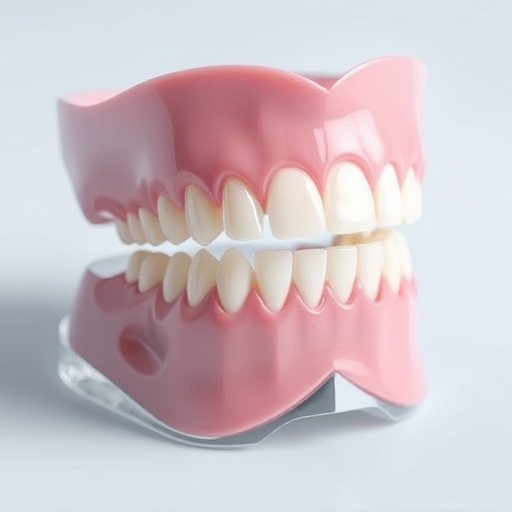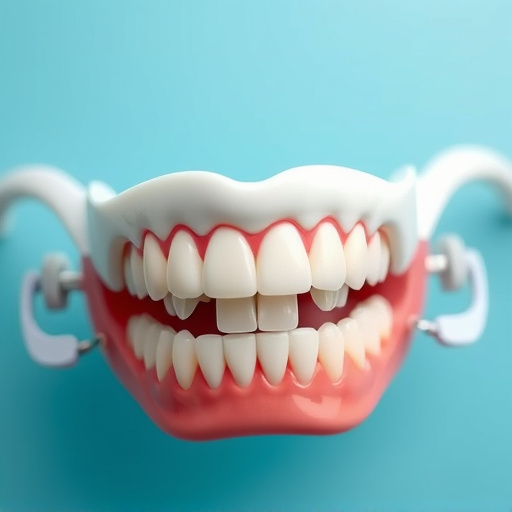The dental implants procedure begins with a consultation to assess oral health and plan surgery. Anesthesia is administered, an incision exposes the jawbone for titanium post placement, and osseointegration fuses it with bone over months. After healing, an abutment connects to the implant, followed by attachment of a custom-made crown for long-lasting smile restoration. Proper post-care includes rest, gentle hygiene, and regular check-ups to ensure successful recovery.
“Transform your smile and boost confidence with dental implants—a modern solution for tooth replacement. This comprehensive guide provides an in-depth look at the dental implants procedure, from understanding its benefits to navigating each step of the surgery. We’ll walk you through the process, offering insights on what to expect during and after implant placement. By following the post-procedure care tips, you can achieve optimal results and enjoy a confident, natural-looking smile.”
- Understanding Dental Implants: A Comprehensive Overview
- Step-by-Step Guide to Implant Placement Surgery
- Post-Procedure Care and Recovery for Optimal Results
Understanding Dental Implants: A Comprehensive Overview

Dental implants are a popular and effective solution for those seeking to restore their smile confidence after dealing with missing teeth. Understanding the dental implants procedure is essential when considering this treatment option. It begins with a comprehensive consultation where dentists assess the patient’s oral health, gum condition, jawbone density, and overall facial structure. This step ensures that the patient is a suitable candidate for implants.
The actual process involves several stages. Initially, the dentist performs tooth extractions if necessary to remove any remaining damaged or infected teeth. Once the gums have healed, they create a small incision in the gum line to place the implant, which is a tiny titanium post designed to mimic a natural tooth root. Over time, this fusion with the jawbone provides a solid foundation for the new tooth, often referred to as a dental crown, which is later attached, resulting in a permanent and aesthetically pleasing replacement for the missing tooth or teeth. This advanced procedure offers a long-term solution, providing patients with a confident smile that can last for many years with proper care.
Step-by-Step Guide to Implant Placement Surgery

The journey to a boosted smile confidence begins with dental implant procedure. Here’s a step-by-step guide to implant placement surgery:
1. Initial Consultation and Planning: The process starts with a detailed consultation where your dentist assesses your oral health, discusses your goals, and takes X-rays or 3D scans for precise planning. This stage is crucial for determining if dental implants are the best solution for you.
2. Anesthesia and Sedation: Before beginning the surgery, local anesthesia is administered to numb the area where the implant will be placed. For more complex cases or those with anxiety, additional sedation options may be discussed to ensure a comfortable experience.
3. Creating the Implant Site: Using the precise planning information, your dentist makes a small incision in your gum tissue to expose the jawbone. They then prepare the bone by drilling a hole of exact dimensions to accommodate the dental implant post.
4. Placing the Dental Implant: The titanium implant post is carefully inserted into the prepared hole in the jawbone. This strong, biocompatible material fuses with the bone in a process known as osseointegration, forming a solid foundation for the new tooth.
5. Healing and Osseointegration: After surgery, a period of healing begins. During this time, the implant post integrates with your jawbone, creating a stable base. Proper aftercare, including good oral hygiene practices (like regular teeth cleaning) and avoiding smoking, facilitates this process.
6. Placing the Abutment: Once osseointegration is complete, typically after 3-6 months, an abutment is attached to the implant post. This small connector piece serves as a bridge between the implant and the final tooth restoration.
7. Crafting and Attaching the Crown: The final step involves creating a custom dental crown that matches your natural teeth in color, shape, and size. This new tooth is securely attached to the abutment, completing the dental implant procedure.
Post-Procedure Care and Recovery for Optimal Results

After undergoing a dental implants procedure, proper post-care is essential for a successful recovery and to achieve optimal results. Patients should be advised to take it easy for the first 24 hours, avoiding strenuous activities or exercises that might disrupt the healing process. This includes steering clear of any intense jaw movements, such as chewing hard foods or using toothpicks, as these actions can negatively impact the newly placed implants.
Regular teeth cleaning and oral hygiene practices are crucial during this period. Patients should be gentle yet thorough in their brushing and flossing routines to prevent infections while also allowing the implant site(s) to heal undisturbed. Additionally, following up with restorative dentistry appointments for check-ups is vital to monitor healing and ensure any necessary adjustments or further treatments are addressed promptly. Children’s dentistry professionals can also play a role in teaching young patients proper post-implant care practices.
Dental implants represent a transformative procedure that not only replaces missing teeth but also boosts overall smile confidence. By understanding the comprehensive overview of the process, from initial assessment to post-care recovery, individuals can navigate their journey towards a more confident, complete smile. Embracing this advanced dental solution enables patients to regain functionality and aesthetics, fostering a positive impact on both personal well-being and self-esteem.














